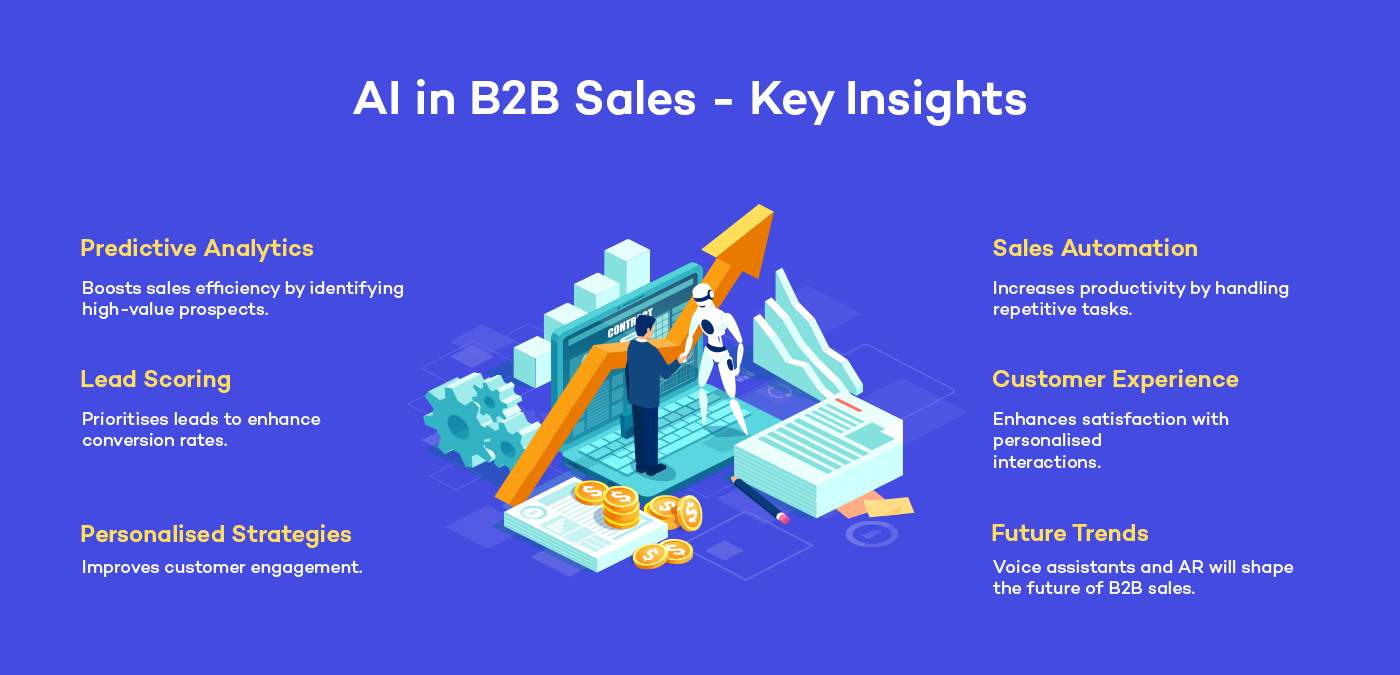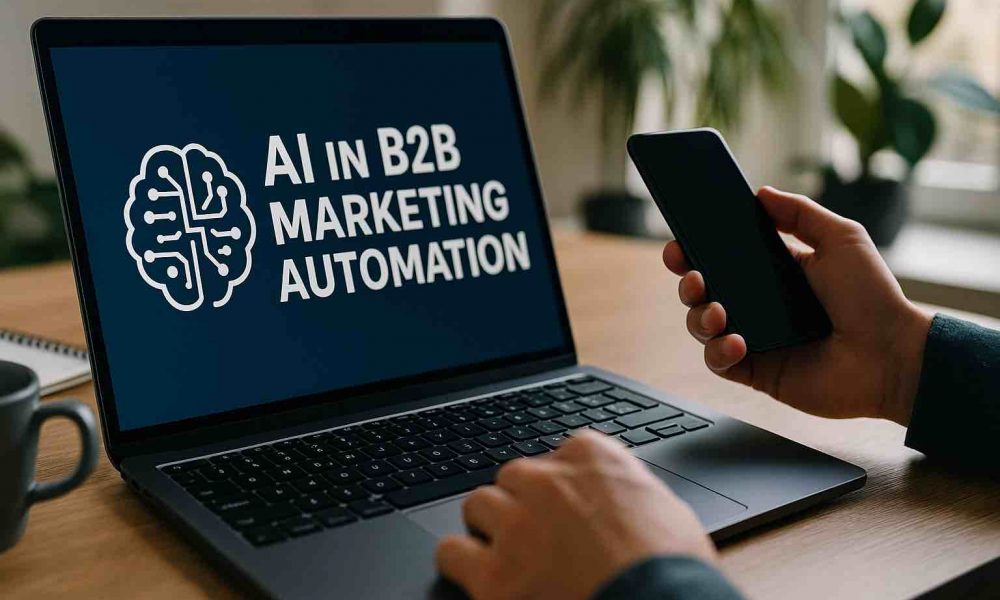Top trends in AI Automation For B2B you need to know
AI Automation for B2B: Approaches to Improve Your Business Performance
AI automation in the B2B field provides a pivotal opportunity for companies to enhance their efficiency. By streamlining procedures and boosting decision-making, organizations can achieve considerable performances. The successful combination of AI needs mindful factor to consider of various elements. Recognizing which locations to automate and selecting suitable devices are simply the start. The possibility for transformation raises important inquiries about application and continuous analysis. What approaches will guarantee long lasting success in this developing landscape?
Comprehending AI Automation in B2B Context
As services significantly look for effectiveness and technology, recognizing AI automation in the B2B context comes to be vital. AI automation leverages advanced innovations to enhance procedures, boost decision-making, and boost total performance. By incorporating AI devices, firms can maximize procedures such as supply chain monitoring, customer relationship administration, and data evaluation. These innovations can evaluate substantial quantities of data swiftly, supplying actionable understandings that drive critical efforts. Furthermore, AI-driven automation decreases human error and liberates workers to concentrate on even more complicated tasks. By fostering cooperation between human intelligence and equipment abilities, services can achieve an one-upmanship. Ultimately, recognizing AI automation is essential for B2B organizations aiming to grow in a significantly electronic market.
Determining Areas for Automation
In the quest for effective AI automation in B2B, it is important to identify specific areas where automation can yield significant advantages. This includes evaluating job repetitiveness, discovering possibilities for data handling, and pinpointing process traffic jams. By concentrating on these aspects, organizations can simplify procedures and improve efficiency.
Task Monotone Assessment
Job repetitiveness assessment plays a vital function in identifying areas ripe for automation within B2B procedures. Minarik AI. This procedure includes evaluating day-to-day tasks to determine which are taxing and repeated, thereby preventing productivity (Growth Systems For B2B). By inspecting operations, services can determine particular features that require too much manual input, such as information entry, billing processing, or client follow-ups. Identifying these repetitive jobs permits organizations to allot resources better, improving total efficiency. Furthermore, automation can decrease human error, enhance procedures, and liberate workers to concentrate on higher-value activities. Performing a complete task repetitiveness analysis empowers B2B organizations to take on targeted automation strategies, ultimately driving boosted efficiency and competitive advantage in the market
Information Handling Opportunities

Operations Traffic Jam Identification
Identifying workflow bottlenecks is an important action in understanding the full advantages of automation within B2B companies. These bottlenecks often manifest as hold-ups, resource restraints, or ineffective processes that hinder performance. To successfully identify these locations, services can carry out extensive evaluations of their workflows, using metrics such as cycle time and throughput. Engaging staff members in discussions about discomfort points can likewise offer beneficial insights. Once traffic jams are determined, companies can prioritize them based on influence and expediency for automation. By strategically resolving these ineffectiveness, B2B companies can enhance operations, improve collaboration, and inevitably improve general efficiency. This proactive technique to workflow evaluation lays the groundwork for successful automation campaigns that drive company development.
Selecting the Right AI Equipment and Technologies
As organizations progressively transform to AI to boost their operations, choosing the right devices and modern technologies becomes crucial for achieving preferred end results. Organizations must examine their specific requirements and objectives, thinking about elements such as user-friendliness, compatibility, and scalability. A comprehensive market evaluation can assist determine leading AI solutions customized for their market. Furthermore, services ought to evaluate the technical infrastructure required to support these tools, making certain seamless combination with existing systems. Information safety and conformity with guidelines are likewise important factors to consider that affect device choice. By focusing on these criteria, companies can make informed choices that drive performance and performance, inevitably causing enhanced company performance. The right AI devices encourage companies to innovate and maintain an one-upmanship in the marketplace.
Creating a Critical Application Plan
A successful strategic execution strategy for AI automation in B2B needs clearly specified crucial goals. Additionally, companies have to analyze their present capabilities to recognize spaces and chances for improvement. Continual tracking and adjustment of the strategy will certainly guarantee placement with progressing company needs and modern technology innovations.
Define Trick Purposes
To assure successful AI automation in B2B environments, specifying key purposes is vital for developing a critical application strategy. Organizations should recognize particular, measurable goals that straighten with their total organization technique. This clarity supplies a roadmap for the automation process, making sure that initiatives are concentrated on locations that will certainly yield the greatest influence. Key goals might include enhancing functional efficiency, improving consumer fulfillment, or raising income. Establishing these goals makes it possible for teams to prioritize resources properly and track progress gradually. In addition, clear objectives promote better interaction among stakeholders, fostering partnership and placement throughout the organization. Eventually, well-defined goals work as the structure for a durable AI automation strategy that drives service efficiency.
Analyze Present Capacities
Before applying AI automation, organizations should completely evaluate their existing capacities to identify strengths and weaknesses. This assessment entails taking a look at existing technologies, labor force abilities, and operational processes. By conducting a comprehensive audit, companies can identify areas that require improvement or financial investment. Organizations needs to additionally consider their information administration techniques, as the high quality and availability of data are important for successful AI assimilation. Recognizing the existing technological landscape enables firms to straighten their resources and capabilities with their strategic purposes. Furthermore, it is vital to examine company society and preparedness for change, as these variables substantially influence the adoption of AI remedies. This evaluation works as the structure for establishing a strategic execution plan that makes best use of the possibility of AI automation.
Monitor and Readjust
Executing AI automation requires a vibrant technique that highlights continual surveillance and change. Businesses should establish a calculated implementation plan that includes normal assessments of AI performance versus predefined metrics. This includes tracking key efficiency indications (KPIs) to evaluate the effectiveness of automation options. By examining data, companies can recognize locations for renovation and adjust their AI systems as necessary. Engaging with stakeholders throughout the procedure guarantees that the automation lines up with company goals and customer demands. Additionally, cultivating a society of adaptability enables firms to react swiftly to altering market problems and technical developments. Growth Systems For B2B. Inevitably, ongoing tracking and modification not just boost operational efficiency however likewise drive continual organization performance in the competitive B2B landscape
Ensuring Data High Quality and Combination
As companies significantly rely upon AI automation in B2B processes, making sure information top quality and integration becomes important for success. Top notch information is essential for precise analytics, notified decision-making, and reliable consumer involvement. Information must be cleaned, standardized, and verified to get rid of mistakes and incongruities that can lead to misguided insights. web Additionally, smooth assimilation throughout different platforms and systems is critical; inconsonant information silos prevent automation initiatives and minimize operational efficiency. Organizations should adopt durable information governance frameworks and utilize innovative devices to assist in data assimilation while maintaining top quality criteria. By focusing on these elements, organizations can enhance their AI automation campaigns, eventually resulting in improved efficiency and a competitive benefit in the B2B landscape.
Determining Success and ROI of AI Initiatives
Exactly how can companies successfully determine the success and roi (ROI) of their AI campaigns? To evaluate effectiveness, organizations need to develop clear, quantifiable objectives aligned with critical goals. Trick efficiency indicators (KPIs) such as expense savings, earnings growth, and performance enhancements can give useful insights. Organizations usually carry out standard evaluations prior to executing AI, allowing them to compare pre- and post-implementation metrics. Furthermore, analyzing client complete satisfaction and involvement can expose the influence of AI on user experience. Consistently evaluating these metrics aids in refining AI strategies and making certain positioning with business goals. By using a structured technique to measurement and examination, companies can precisely examine the performance of their AI initiatives and make notified choices about future financial investments.
Getting Over Challenges in AI Adoption
Many organizations acknowledge the capacity of AI to transform their operations, they commonly run into substantial challenges during adoption - B2B Growth Consulting. Key obstacles include an absence of skilled workers, which obstructs the reliable execution and management of AI innovations. Organizations likewise deal with assimilation concerns, as existing systems might not be compatible with new AI services. Furthermore, issues relating to information personal privacy and protection can lead to hesitance in fully embracing AI capabilities. Resistance to change from employees can even more complicate the shift, necessitating extensive training and interaction methods. To get rid of these difficulties, organizations ought to purchase talent development, guarantee durable information administration, and promote a culture that embraces innovation, inevitably leading the way for successful AI combination and enhanced business efficiency
Often Asked Questions
Just How Can AI Automation Improve Client Relationship Monitoring in B2B?
AI automation can improve customer partnership administration in B2B by streamlining interaction, providing tailored communications, examining customer data for insights, automating follow-ups, and boosting feedback times, eventually cultivating stronger partnerships and driving sales growth.
What Industries Advantage Many From AI Automation in B2B?
Production, financing, medical care, and logistics markets benefit most from AI automation in B2B. These markets leverage automation to enhance processes, improve information analysis, enhance consumer communications, and inevitably enhance functional efficiency and productivity.
How Does AI Automation Effect Staff Member Roles in B2B Business?
AI automation changes employee functions in B2B firms by streamlining tasks, lowering repetitive work, and allowing team to concentrate on tactical efforts. This change enhances productivity and promotes a society of technology and adaptability.
What Are the Expenses Related To Applying AI Automation?
The costs associated with carrying out AI automation consist of first software purchase, facilities upgrades, training expenditures, recurring maintenance, and potential integration challenges. AI Automation For B2B. Companies need to also think about lasting functional shifts and worker adjustment expenditures in their economic planning
How Can Services Make Certain Ethical AI Use in Their Workflow?
Businesses can guarantee ethical AI use by establishing clear guidelines, advertising openness, performing normal audits, involving diverse stakeholders, and prioritizing data privacy. Continuous training and understanding programs additionally improve understanding and adherence to honest methods.
